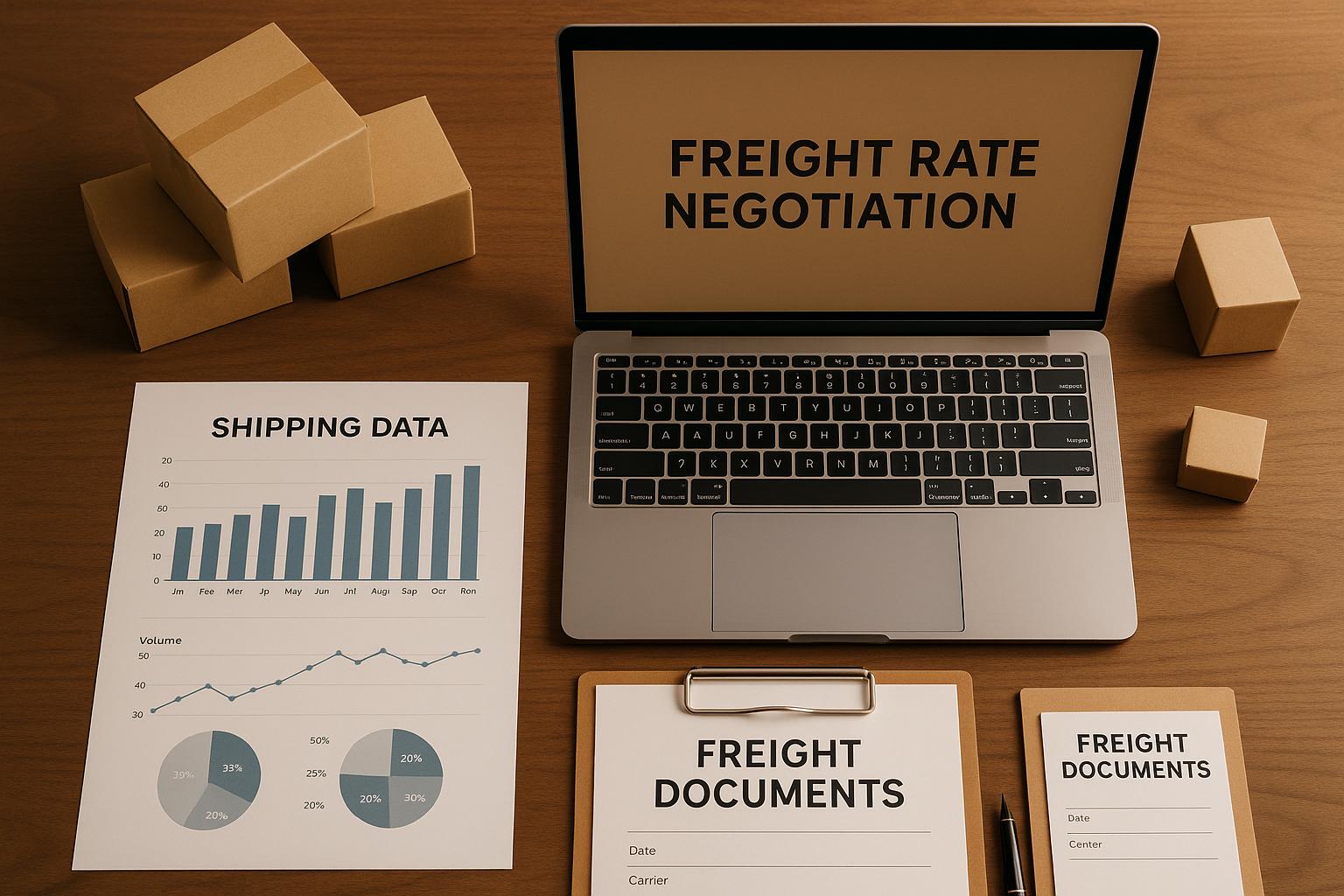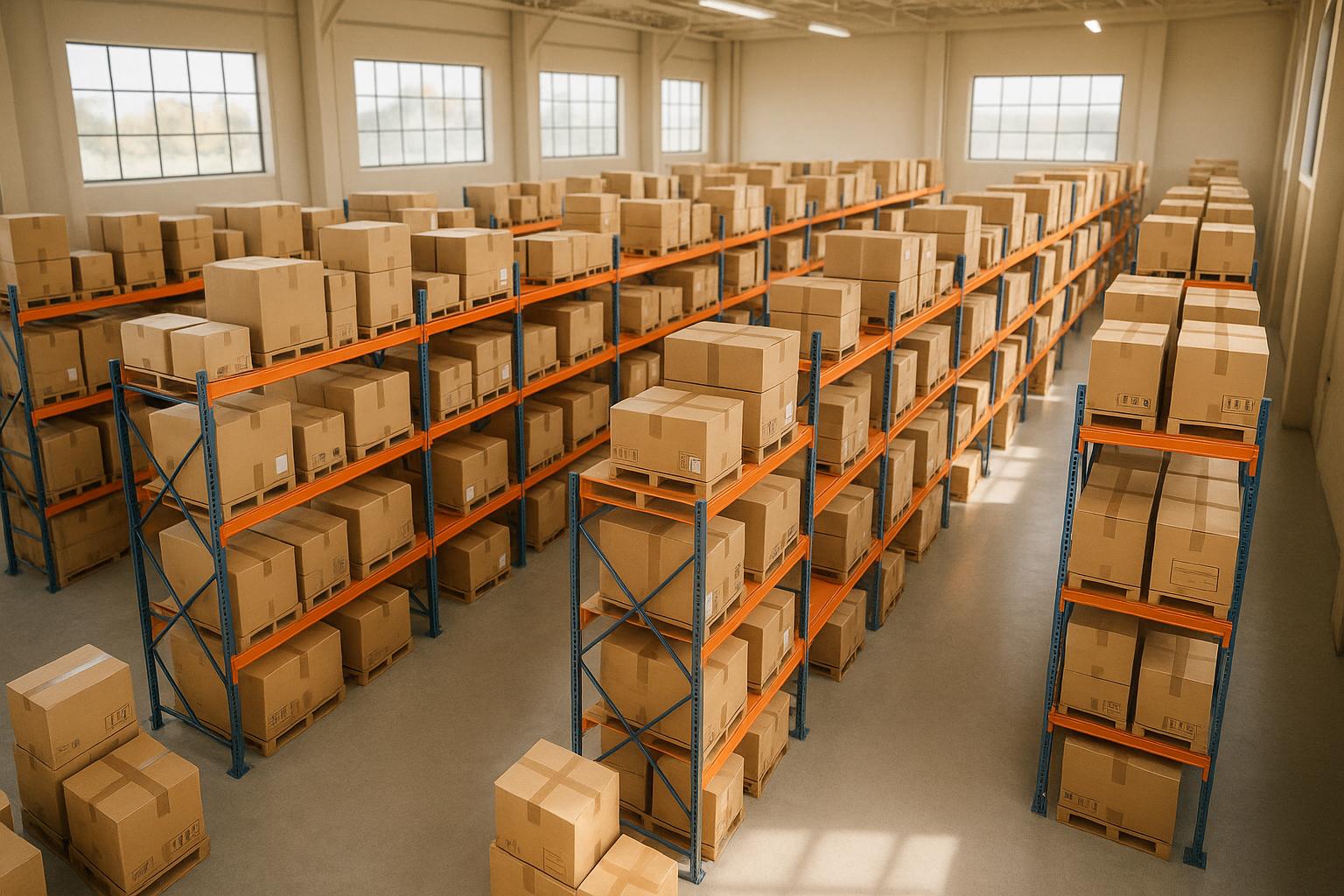How 3PLs Ensure Vendor Compliance

Vendor rules are key for good supply chain work, and 3PLs (third-party logistics firms) are very important in making sure vendors stick to these rules. By setting clear rules, giving training, doing checks, and using new tech, 3PLs help vendors get packing, labeling, and shipping right. This cuts mistakes, lowers costs, and makes sure things arrive on time.
Key Points:
- Routing Guides: These papers show how to pack, label, and ship stuff.
- Training Programs: 3PLs give real help and teach vendors how to follow rules.
- Audits & Feedback: Regular checks find problems, give ideas back, and watch how vendors do.
- Tech Tools: Tools like WMS and EDI check rules, see trends, and make things work better.
- Working Together: Talking, giving ideas back, and reward plans push vendors to meet rules.
When vendors stick to these rules, it stops problems, makes customers happy, and makes the supply chain stronger.
8 Ways a TMS Provides a Set of Business Rules for Shippers
How 3PLs Keep Vendor Rules in Check
Making sure vendors follow rules is key to keeping the supply chain running well. Third-party logistics providers (3PLs) use set steps to make sure vendors do what they need. By setting clear rules and checking if they're met, they help keep products moving well in the supply chain.
Making and Sharing Routing Guides
Routing guides are the main part of any vendor rule program. These papers tell vendors just how to pack, mark, and send their items. They go over everything from the type of packing and box size to where to place labels, how to send, and when items should arrive.
3PLs make these guides easy to use with simple words and adding pictures like drawings and photos. These pictures show vendors just how to pack their items the right way. Many 3PLs also have online spots where vendors can get to new guides easily and know about any updates to rules.
Clear steps cut errors. When vendors know just what to do, they're more likely to do it right the first time, saving both time and money. Some 3PLs even make easy cards for vendors to keep at their pack spots, making sure rules are always easy to follow.
This clearness sets up good vendor teaching programs.
Vendor Starting and Teaching Programs
Just giving a routing guide isn't enough. 3PLs do more by giving hands-on start help and teaching to meet rule needs.
Teaching often has real showings of how to pack and label right. Some 3PLs give video lessons that vendors can watch when they can, while others have live web talks where vendors can ask things right then.
The point is to help vendors see the "why" behind each rule. Teaching also shows what happens if rules aren't met, like fees or late deliveries.
To help more, many 3PLs give new vendors a go-to person for the first few months. These people check in often to answer questions and solve issues before they grow, making a smoother start to following rules.
This first help leads to ongoing checks and better ways.
Rule Checks and Audits
Regular checks and reviews are key to find and fix rule issues. Warehouse teams look at how things are packed, make sure labels are right, and check that orders match what's sent. Any problems are written down, and vendors get clear feedback.
Keeping track of data helps spot trends. If a vendor often has label mistakes or sends broken items, the 3PL can find the issue and work on a fix. Many use score cards to compare vendor work to rule goals.
Instead of just pointing out mistakes, 3PLs work with vendors to fix ongoing problems. This might mean more teaching, changing how things are done, or even suggesting new tools to make work smoother.
To keep good ties, many 3PLs have monthly or every few months reviews with vendors. These talks are a chance to solve worries early, stopping small issues from becoming big problems.
Tech and Tools for Vendor Rules
Dealing with vendor rules is now much easier with new tech. Today's smart systems let 3PL providers fix problems early, keep work smooth, and make sure vendors meet set standards. Let's look at how these new tools and systems help make things work better and more right.
Storage Systems and EDI
Storage Management Systems (WMS) are key in checking rules. They auto-check goods that come in against what vendors must meet, pointing out wrongs like bad pallet sizes or missing tags as soon as they find them.
Electronic Data Exchange (EDI) goes further by managing tasks like buying, shipping info, and bills with no need for people. This makes it clear from when you order to when you get it, easing the way to see repeat issues when vendors do not meet hopes.
Some WMS now let staff take photos, making notes on hurt goods or bad packing. These pics act as proof, making it quick to show vendors what they need to fix.
These systems link well. For example, when goods come in, the WMS keeps on top of store counts, sends out notes via EDI, and makes reports on rules - all while cutting down on typing and mistakes.
Live Metrics and Alerts
Live boards show how well rules are followed right away, setting off alerts when things fall short. This lets teams fix issues fast.
Scorecards keep track of things like tag rightness, packing quality, on-time comes, and right papers. This clear info helps 3PL providers find problem spots and figure out when extra vendor help is needed.
Tools for seeing trends go deeper by spotting patterns. For instance, they might show repeat issues in busy times or with certain goods, helping providers fix true causes, not just quick fixes.
JIT Transport's Rule Fixes

JIT Transport uses top systems to make dealing with vendor rules simple. By mixing storage systems, moving track, and chatting with vendors, JIT builds a one-plan act that cuts mistakes and speeds up fixing problems.
With ERP mixing, vendors can plug their systems into JIT’s grid. This auto-swap of buying details, ship confirmations, and rule news lets vendors focus on giving orders right while sticking with rule standards.
JIT’s grow-ready build fits many needs, whether it’s special handling needs or usual selling pack rules. This way, firms can keep their brand style without paying more.
Also, JIT’s big web of storages across the country uses the same rule systems, so vendors just learn one way no matter where they send goods. Live tracking lets vendors and customers see goods and rule action right then. This open view builds trust and backs ongoing getting better in the supply line.
sbb-itb-eafa320
Good Ways to Keep Vendors In Line
Strong vendor rules work best when both sides talk well, know what is expected, and both do their part.
Talk Well and Often with Vendors
Talking often stops small issues from getting big. Set times to meet where 3PLs can show how they're doing, talk about new stuff coming up, and clear up any questions about how things should go. These talks help everyone stay informed and ready for problems.
Vendor sites help too. They show scores on how well rules are being followed right away, letting vendors fix things fast instead of waiting for reports. This helps keep everything running well.
Feedback is also key. By letting vendors share problems they face - like in packaging or labeling - 3PLs and vendors can work together to solve them. These talks add to set rules, making everything work better.
Give Rewards and Plans for Fixes
Getting vendors to do well isn't just about penalties. Giving rewards can work better by giving perks for following rules. For example, vendors who always meet the standards might get paid faster, earn a top vendor spot, or get discounts. These clear rewards make vendors want to keep following the rules.
For ongoing problems, plans for fixes help a lot. These plans give clear steps and times to fix things, with support included. Rather than just penalty, successful 3PLs team up with vendors to find the main problems and stop them from happening again. This teamwork fixes issues and builds stronger bonds.
Most 3PLs have levels in how they handle rule-breaking. First mistakes might just get a warning, but more mistakes can lead to fines or even rethinking contracts. This fair way makes sure vendors are responsible while helping them get better.
Keep Rules Up to Date
Rules need to change as demands and vendor work change. Reviewing rules often keeps them right for the season, new tech, and changes in the field. Checking data can also show ways to make rules better.
When updating rules, it’s important to tell vendors early. This gives them time to change their ways and understand why new rules are needed. Good talks at this time mean easier changes and steady rule-following.
JIT Transportation does a great job with this by setting clear rules and giving ongoing support. Their flexible solutions match what clients need while keeping the same rules for everyone. This lets vendors do well and give the good service that customers look for.
Wrap Up
To end it, vendor rules are not just a step in 3PL logistics - they change the game. When vendors stick to rules, e-commerce logistics roll on well: items move quick, fewer mistakes, and clients get a happy time.
Good rule programs grow with clean talk, full training, and help that keeps on. Put in new tools like Warehouse Management Systems (WMS), Electronic Data Interchange (EDI), and live tracking, and you're set to fix problems fast. These tools let vendors see clear goals and check their own work, making all run better.
Main Points
The base of a good vendor rule program is built on set steps, help from others, and wise tech use. Clear guides give vendors a map, and starting programs make sure they know the rules early on. Steady checks and watching keep all in line, but true betterment comes when 3PLs push for rules to be followed and join with vendors to face problems.
Look at JIT Transportation for instance. They shine by mixing top rule tools with real vendor help. They shape 3PL answers based on each client’s needs, yet keep steady rules across all they handle. This way makes sure vendors meet rules while giving the strong service e-commerce brands need.
When 3PLs put vendor rules first, the good they do spreads through the whole chain. Vendors get the tools and tips they need to win. 3PLs give steady, sure service. And e-commerce brands? They can aim to grow their work without stress about chain breaks. By making strong ties with vendors and using new tech, 3PLs make it possible for e-commerce brands to expand with sure steps.
FAQs
How do 3PL providers use tech to keep vendors in line and make the supply chain run well?
3PL providers trust new tech to check on vendors and keep supply chain issues low. They use tools like live tracking, auto checks on rules, and joint supply chain systems to find problems fast, make paperwork easy, and change fast to new rules.
With these tools set up, 3PLs can work better, cut waits, and lower risks. This makes sure vendors stick to rules and the supply chain stays strong and stable. For online brands, this means better work flow and good customer experiences all the time.
How do 3PL providers make sure sellers follow rules but also keep them happy?
3PL providers work hard to keep a balance between making sure rules are obeyed and working well with others through setting clear rules and just outcomes. For example, sellers might get fines like pay cuts for late goods or wrong tags. On the good side, many 3PLs give bonuses, like prizes for good work or a pat on the back, to push sellers to keep to the rules.
To make sure things run smooth and to keep good ties, 3PLs also do regular checks. These checks spot issues with following rules early, letting them get together with sellers to fix any issues quick. This way of doing things not only keeps things running well - it also builds trust and makes a team setting where everyone is held responsible and shares in the wins.
Related Blog Posts
Related Articles

Freight Rate Negotiation for E-commerce Brands

10 Common Supply Chain Risks and How 3PLs Solve Them

